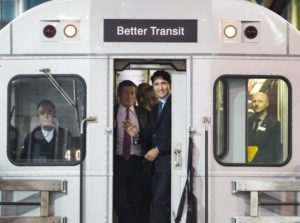SCI funding, as explained on pages 127-28 in the Education Funding Technical Paper, 2016-17:
This funding is intended to help boards address the identified renewal backlog from the data collected to date through the Ministry’s five-year Condition Assessment Program, which began in 2011.
Beginning in 2015–16, the Ministry changed the funding approach for SCI. SCI funding is now allocated in proportion to a board’s total assessed renewal needs under the Ministry’s Condition Assessment Program.
80% of SCI funds must be targeted to key building components (foundation, roof, windows, etc.) and mechanical systems (electrical, HVAC, plumbing, etc.)
20% of SCI funds are discretionary, offering school boards flexibility to allocate towards locally-identified projects at existing schools, which are listed in the VFA facility database. (e.g. science labs, interior finishings, etc.)
School boards have the flexibility to prioritize schools and individual components and systems that fit under these categories and deal with problems as they emerge, rather than having to wait for the next condition assessment of a building.
Unspent funds from a board’s SCI allocation may be carried forward to the following year.
Boards will be required to report spending of this SCI funding in the VFA facility database. Reimbursement of board expenditure is contingent on timely reporting. Payments will be made twice a year based on reported expenditure. The Ministry will fund short-term interest costs related to these expenditures reflecting that SCI funding will occur on a bi-annual basis, consistent with other capital programs.
Boards must use this funding on depreciable renewal expenditures in schools that are expected to remain open and operating for at least five years. Boards should use the funding to address renewal priorities of the board, including addressing health and safety, replacing and repairing building components, improving the energy efficiency of schools, and improving accessibility. Boards are not to use this funding to expand the size of schools, build new schools, or to service debt.
SRA funding, synthesized from information on pages 114-22 in the Education Funding Technical Paper, 2016-17:
The provincial government allocates SRA funding to school boards predominantly based on the number of pupils in a given board, although other factors such as age of buildings and utilization rates of schools are also taken into consideration in how this funding is allocated.
School boards are to use this money for repairing and renovating schools. Generally, school boards use SRA funding for more “cosmetic” repairs such as painting – which are also included in the $15-billion repair backlog total. These types of repairs are important in sending a positive message to students about their learning environment, to teachers and staff about their working environment and to the community, in general, about the importance of our publicly funded schools as critical infrastructure. Therefore, SRA funding is a good complement to SCI funding.

